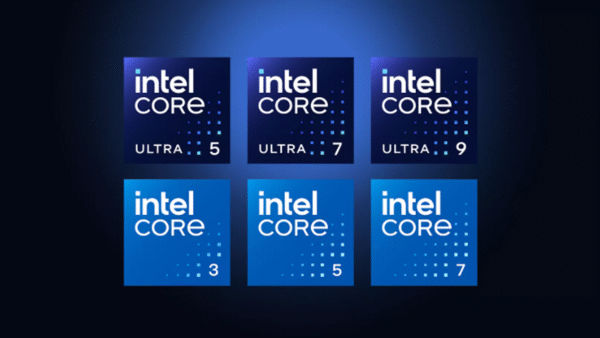The Silicon Brain: A History of the Intel Processor from Birth to Present
Introduction: The Foundation of a Digital Revolution
The story of the Intel processor is not merely a chronicle of technological progress; it is the origin story of the modern digital world. From humble beginnings as a memory chip company, Intel Corporation embarked on a journey that would lead to the creation of the “brain” inside the vast majority of personal computers for decades. Its processors, often dubbed “x86” after the architecture of the first model, have driven exponential growth in computing power, defined industry standards, and fundamentally reshaped human society. This history traces the evolution of the Intel CPU, from the first fledgling integrated circuit to the complex behemoths of the artificial intelligence era.
Chapter 1: The Birth of an Idea – The Intel 4004 (1971)
The Intel story begins not with a CPU, but with a calculator. In 1969, Japanese calculator manufacturer Nippon Calculating Machine Corporation asked Intel to design a set of 12 custom chips for its Busicom 141-PF printing calculator. Intel engineers Marcian “Ted” Hoff, Stanley Mazor, and Federico Faggin conceived a more elegant solution: a single, general-purpose chip that could be programmed for various tasks.
This chip, the Intel 4004, was released in 1971. It was the world’s first commercially available microprocessor. While primitive by today’s standards—featuring 2,300 transistors, a 4-bit bus, and a clock speed of 740 kHz—its significance cannot be overstated. It proved that complex logic could be miniaturized onto a single piece of silicon, paving the way for the computing revolution.
Chapter 2: The PC’s Founding Father – The Intel 8086 and 8088 (1978-1979)
While the 4004 was a proof of concept, the processors that truly set the course of history were the Intel 8086 and, more importantly, its sibling, the 8088.
- 8086 (1978): This was the first 16-bit microprocessor from Intel. It introduced the x86 architecture, an instruction set that would become the most successful and enduring in computing history.
- 8088 (1979): A cost-reduced version of the 8086 with an 8-bit external bus. This decision made it cheaper to build systems around it.
Why was the 8088 so pivotal? In 1981, IBM was racing to develop its Personal Computer (IBM PC). They needed a capable and, crucially, readily available 16-bit processor. Intel’s 8088 fit the bill perfectly. IBM’s choice to use an open architecture and Intel’s chip cemented the “Wintel” (Windows + Intel) partnership that would dominate the PC market for the next 40 years. The IBM PC and its clones all needed an x86 CPU, and Intel was the primary source.
Chapter 3: The Rise of the Brand – The Intel 386 and 486 (1985-1989)
The next two generations moved the PC from a hobbyist machine to a serious computing platform.
- Intel 386 (1985): A quantum leap. The 386 was Intel’s first 32-bit processor. It introduced multitasking capabilities, allowing a PC to run multiple programs simultaneously. This was essential for the evolution of operating systems beyond simple DOS.
- Intel 486 (1989): The 486 brought further integration and a massive performance boost. For the first time, a math co-processor (previously a separate, expensive chip) and an L1 cache were built directly onto the CPU die. This significantly accelerated mathematical calculations and data access. The “DX” suffix denoted the integrated co-processor, while the “SX” was a lower-cost version without it. This era also saw the rise of competitors like AMD and Cyrix, who created “clone” chips, forcing Intel to compete on performance and innovation.
Chapter 4: The Marketing Masterstroke – Intel Pentium (1993)
With competitors able to use number-based names like “486,” Intel made a strategic decision: it would trademark a new name for its next generation. Thus, the Intel Pentium was born in 1993.
The Pentium was a superstar. It featured a superscalar architecture, meaning it could execute two instructions per clock cycle, effectively doubling performance over the 486. While it had a rocky start with the infamous FDIV bug (a floating-point division error that led to a massive recall and cost Intel $475 million), the company’s handling of the crisis ultimately strengthened its reputation for accountability.
The Pentium brand became a household name, fueled by Intel’s iconic “Intel Inside” marketing campaign. For consumers, “Pentium” became synonymous with “fast computer.” This era saw a rapid succession of improved Pentium lines: Pentium Pro (for servers), Pentium MMX (adding multimedia instructions), and the wildly successful Pentium II and Pentium III, which moved the CPU into a cartridge-style slot and then back to a socket.
Chapter 5: The Core of the Matter – The NetBurst Misstep and a Pivot (2000-2006)
In 2000, Intel launched the Pentium 4, based on a new architecture called NetBurst. Its design philosophy was to achieve very high clock speeds (frequency). While initially competitive, NetBurst hit a wall. As clock speeds pushed past 3 GHz, power consumption and heat dissipation became unbearable. The architecture was inefficient, doing less work per clock cycle (IPC).
Meanwhile, competitor AMD seized the initiative with its Athlon 64 processors. The Athlon 64 was more efficient, performed better in many applications, and was the first 64-bit PC processor—a crucial innovation Intel had to scramble to match.
This was a period of crisis for Intel. The NetBurst approach was a dead end. The solution came not from the desktop team, but from the mobile division. Their Pentium M chip, designed for laptops, was based on the older but much more efficient Pentium III core. It did more work per clock and used far less power.
Intel made a monumental decision: it abandoned NetBurst. It took the efficient core of the Pentium M and evolved it into a new architecture for desktops, laptops, and servers. This new architecture was called Intel Core.
Chapter 6: The Tick-Tock Era and Dominance Regained (2006-2016)
The launch of the Intel Core 2 Duo in 2006 was a return to form. It was fast, efficient, and handily outperformed AMD’s best. This began Intel’s golden age of “Tick-Tock”:
- Tick: A die shrink of the current microarchitecture (e.g., moving from 65nm to 45nm manufacturing). This improved efficiency and allowed for more transistors.
- Tock: A new microarchitecture on the matured process node. This delivered significant performance gains.
This predictable, two-step cadence allowed Intel to deliver steady annual improvements and establish overwhelming market dominance. The Core i3/i5/i7/i9 branding, introduced in 2008, created a clear consumer hierarchy that exists to this day. For a decade, Intel was virtually unassailable at the high end of computing.
Chapter 7: The Present Challenge – Competition, Process Delays, and a New Strategy (2017-Present)
The last several years have been the most challenging for Intel since the NetBurst era.
- The Resurgence of AMD: Under CEO Dr. Lisa Su, AMD executed a brilliant strategy with its Zen architecture. Starting in 2017, Ryzen processors offered comparable—and often superior—performance to Intel’s Core chips at better price points and with more cores. For the first time in over a decade, Intel faced truly stiff competition.
- Manufacturing Delays: Intel’s legendary “Tick-Tock” model broke down. The company struggled with its transition to 10nm and later 7nm process nodes, ceding its manufacturing leadership to TSMC (which makes chips for AMD, Apple, and others).
- Strategic Pivot: Facing these challenges, under new CEO Pat Gelsinger, Intel embarked on a bold new strategy named IDM 2.0:
- Invest heavily in internal manufacturing.
- Become a “foundry” and manufacture chips for other companies.
- Embrace “disaggregated” chip design with technologies like Foveros 3D stacking, allowing them to mix and match compute, graphics, and I/O tiles built on different process nodes to optimize performance and cost.
Current generations of Intel processors, like the 12th, 13th, and 14th Gen Core series (Alder Lake, Raptor Lake), reflect this new approach. They feature a Performance Hybrid Architecture—mixing high-performance “P-cores” with high-efficiency “E-cores” on a single CPU—and are highly competitive, marking a strong comeback in the performance race.
Conclusion: An Enduring Legacy
The history of the Intel processor is a cycle of brilliant innovation, periods of dominance, painful stumbles, and resilient comebacks. From the 4004 that started it all to the hybrid, AI-powered chips of today, Intel’s journey has been the central narrative of the computing industry. While the competitive landscape is fiercer than ever, Intel’s vast resources, engineering talent, and new strategic direction ensure it will remain a fundamental force in shaping the future of processing for years to come.











